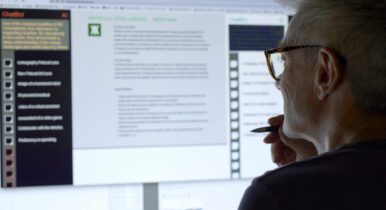Relying on Strong Design to Build Your Web Presence

After graduating from Towson University with a double major in film and political science, John Horneman made his way to DC where he got his start in the RNC’s oppo research department. By chance, he started doing HTML email templates and was moved over to the digital department after 2012.
He eventually served as the deputy creative director for the committee. That’s where he paired his background in design and data. After leaving the RNC, he worked at Stand Together, but spread his talents across the Koch network. He’s been out on his own since 2016 doing graphic design and web design for a variety of candidates and groups.
C&E: What does a typical advocacy or campaign site that you create look like?
Horneman: When it comes to issue campaigns, there’s a homepage and a few narrative pages — just the what and how that introduce the issue and have a good visual, like an interactive map or a video, and then some kind of action: sign up or donate.
With my clients, I try to keep the expectations for copy light just because you don’t want to overload them too much. I find, with a lot of clients, if they don’t come to me with a large library of content, I don’t really expect a bunch to happen unless they’re talking about hiring a real editorial crew and having a publishing schedule.
C&E: Is the challenge making those sites as user friendly as possible?
Horneman: If they’re primed to donate or they’re primed to take action, you kind of want to get out of their way and you want that page to just be absorbed easily in their minds and get easily to where they want to go. Sometimes there’s more narrative-orientated pages where you’re going to do a little bit of explaining to people who are not familiar with the issue.
I find, usually, that landing pages that come to me as concepts are actually two concepts because they’re dealing with those two audiences: they’re trying to bring in new people and keep old people engaged.
I just try to get people to think about those as two separate goals, rather than one, and to invest in how to get both of those audiences to do what you want them to do because oftentimes it’s not going to be the same tactics with them.
C&E: Where do you see web design going in the politics & advocacy space?
Horneman: I like to hope that good creative is what is gonna build strong movements and strong bands and strong campaigns, and there’ll be less of a reliance on stirring up emotions and provoking actions. In the public affairs sense, hopefully some more building, stronger websites and social media for good and not just chasing sensationalism. That’s hopefully where things are going because I think there’s gonna be some more challenges in terms of data privacy in the future. You’re gonna need more of a gut feeling for what’s gonna work and less of a reliance on data.
C&E: Do you go with a brand style guide or do you have a lot of creative liberty?
Horneman: If it’s a company that has a style guide, that’s always great to see. I always respect that. Their brand was put together for a reason. You should respect it. There’s probably some tools there you can work with. Stepping outside of that is just going to be confusing for people who are familiar with your existing brand.
If it’s an organization with just light branding that they’re not very attached to, or it’s just a few colors, I like offering just a little more — an extension. That can be helpful for me to land more business there, or just to help the campaign succeed better.
C&E: What’s the discovery process like with your clients?
Horneman: I have a lot of freedom with that and my clients tend to trust me. When it comes to design for them, those decisions are in my hands. Sometimes, I’m just giving them one option and we’re rolling with that.
I try not to really ask my clients those questions [preferences for fonts, colors, etc] a bunch. When it comes to discovery time, I see more like they’re applying for a loan with me maybe than if I’m asking them about colors or what not. I put those in my wheelhouse and tell them I’m the expert.
C&E: Are there colors that you’re seeing more of these days?
Horneman: Doing so much political work, I can’t get away from red and blue. And I find if I’m ever doing something outside of politics, it just seems to constantly be the two colors that pop up.
But lately, I have seen a little more desire from people to get away from that and for campaigns to establish using different oranges and yellows rather than the reds and kind of separating from the political scene that way through the use of colors and trying not to come off as rah, rah, American eagle, July 4th.



